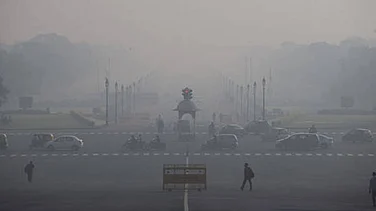In the first General Budget of the Bharatiya Janata Party (BJP)-led National Democratic Alliance (NDA) government’s third term, Union Finance Minister Nirmala Sitharaman on Tuesday announced nine priorities for a developed India, but health did not find a place among them.
However, adopting a community-oriented strategy, a pivotal highlight in the health sector pertains to the Budget's emphasis on enhancing accessibility to medicines, especially for cancer treatment. The exemption of three crucial cancer drugs from customs duties marks a substantial reduction in their prices.
Considering the exorbitant costs associated with cancer therapies, which frequently render them unaffordable for a large segment of the population, this exemption stands as a critical measure. Reports underscore that cancer accounted for approximately 9.6 to 10 million fatalities worldwide in 2023.
According to the Global Cancer Observatory (GLOBOCAN), India ranked third globally in terms of cancer cases, following China and the United States.
Furthermore, the finance minister proposed modifications to the basic customs duty on X-ray tubes and flat panel detectors used in medical X-ray machines. These adjustments, part of the phased manufacturing programme, aim to support the expansion of domestic capacity.
In the current fiscal year, the Health Ministry has been allocated Rs 90,958.63 crore, marking a 12.9 percent increase from the previous budget. Within this allocation, the Department of Health and Family Welfare is set to receive Rs 87,656.90 crore, while the Department of Health Research will receive Rs 3,301.73 crore.
Additionally, the Finance Minister mentioned plans to open new medical colleges and hospitals. Expectations were high for significant relief under the Ayushman Bharat scheme in this budget, but no major announcements were made in that regard.
The government is allocating significantly less budget to healthcare, falling short by 73 percent of what is required. According to the National Health Policy of 2017, the target was to spend 2.5 percent of GDP on the health sector by 2024-25, including expenditures by both central and state governments. To achieve this target, a total of Rs 8.2 lakh crore should have been spent this year, with states contributing 60 percent and the Centre the remaining 40 percent.
According to this calculation, the Central government's health budget should have been Rs 3.3 lakh crore annually; whereas, only Rs 91,000 crore has been allocated in this budget, fulfilling only 27 percent of the requirement.
In terms of increasing expenditure on the health budget, the Congress-led United Progressive Alliance (UPA) government was ahead, while the NDA (the current ruling dispensation) lags behind.
In 2004, India's health budget was Rs 9,200 crore, which increased to Rs 27,147 crore by 2013, showing a 295 percent increase during the 10 years of UPA government, with an average growth rate of 29.5 percent. In comparison, during the 10 years of the Narendra Modi government (2014-2023), the health budget increased by 245 percent, with an average growth rate of 24.5 percent, indicating a 4 percent lower expenditure on health budget compared to the previous government.
The direct impact of insufficient allocation for the sector in the budget is on the common people’s pockets. A World Bank report indicates that 53 percent of total health expenditures in India are paid out of pocket by individuals. In contrast, in high-income developed countries, ordinary people spend only 10 percent to 15 percent on their health expenses, with the rest covered by the government.
Neighboring countries like Nepal and Bhutan spend more on health per capita than India, according to the World Health Organization. In 2023, India spent 3.2 percent of the GDP on health, while in the same period, the figure in the United States was 16 percent. Pakistan and Bangladesh spend less on health than India.
According to the CMIE-CPHS survey, out of every Rs 100 spent on treatment in India, Rs 42.3 goes towards medicines, while only Rs 8.6 is spent on doctor fees, hospitalization and medical tests combined.
The shortage of funds in the budget directly affects the health infrastructure. Only 27 percent of the required funds have been allocated in the budget, which is 73 percent less than what is actually needed. This reflects in the state of health infrastructure in the country, where only 37 percent of the required hospital beds are available compared to the need.
According to the WHO, for every 100,000 population, there should be at least 100 MBBS doctors available. In India, there are only 70 to 75 doctors per 100,000 population; whereas, in the United States, there are 255 doctors for the same population size.
Including Ayurveda, Homeopathy and traditional medicine practitioners could potentially increase the number of doctors in India beyond WHO standards.

















